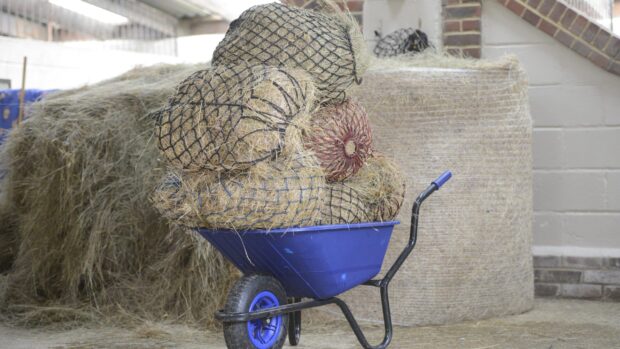Going into this winter, there are plenty of horses in good condition, helped by a summer and autumn of wet and warm weather, which were ideal conditions for grass growth. Grass is the richest feed of all. Even autumn grass, if offered ad lib, would contribute more than racehorse feed to any equine diet.
However, the first frosts and snow falls mean an abrupt end to abundant grass, as growth slows down once the soil temperature drops to 5°C. While we can have an idea of the nutrient content or richness of the concentrate feed we use, it’s impossible to quantify what grazing supplies. Horses will notice the change when a sudden cold snap stops grass growth.
Their main energy supply will drop, because autumn grass is medium-energy compared with conserved forages, which are usually low-energy. A swap between the two will lead to either a drop in condition or the need to give more hard feed. A sudden slowing in grass growth will mean a drop in fibre supply, which, if coupled to an increase in the hard feed, brings a higher risk of colic.
The first frost is also a high-risk time for laminitis-prone animals. During a frost, grass stores sugar as fructan, a carbohydrate that cannot be digested in the small intestine. This means the grass has the same effect as an overdose of cereals, with resulting negative effects on digestive function when it flows into the hindgut, with laminitis a likely outcome.
Top winter tips
- Start offering hay or haylage to horses at grass to minimise the change to the diet once grass growth slows. This is important in all horses but particularly in pregnant mares and young stock
- For horses in work, the heavy conditions underfoot mean they have to work harder. Combined with a drop in grazing quality, this means that they require more feed and forage to keep weight on
- The mild, warm autumn has also led to an increase in the activity of stored pests, such as mite, which thrive in these environments. Good feed hygiene and clearing up all spillages will help guard against unwanted creepy crawlies
- For horses out wintering at grass and in good condition, use a vitamin and mineral supplement to maintain essential micronutrient supplies
|
||
 |
||


 Get up to 19 issues FREE
Get up to 19 issues FREE TO SUBSCRIBE
TO SUBSCRIBE 


